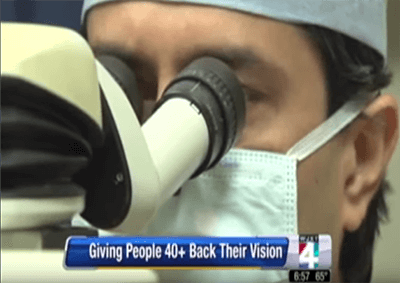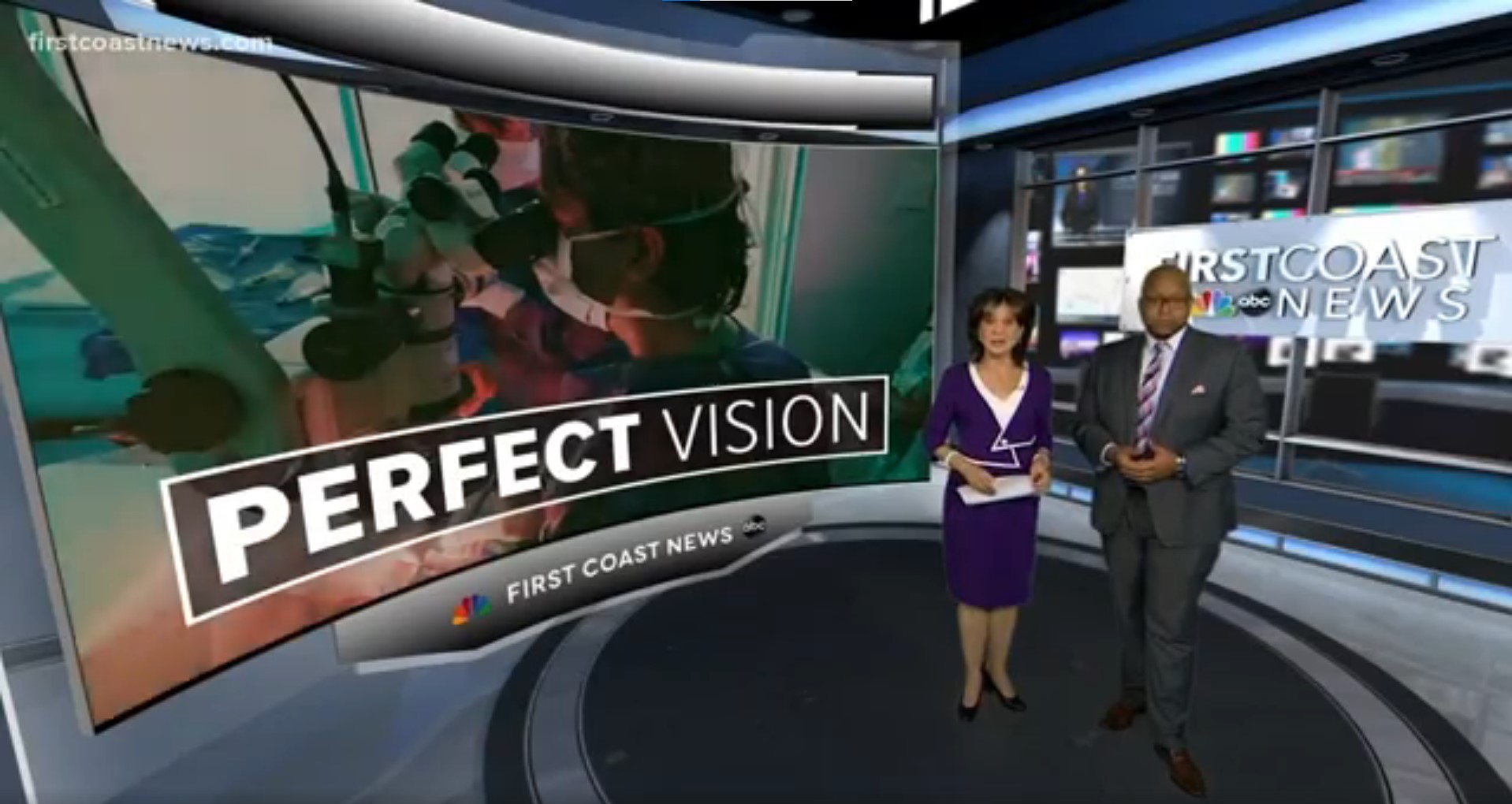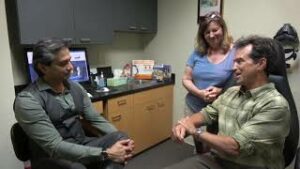The World’s Leading Eye Doctor Specializing in Presbyopia Correction in Jacksonville
Presbyopia (need for reading glasses) is said to be the final frontier of vision corrective surgery, impacting millions of people globally. With his individually custom-designed techniques, Dr. Gulani uses a full spectrum of micron-precision lasers and new generation lens implants including combinations of technologies to correct presbyopia for a worldwide clientele. His dedicated innovations in this direction has lead to his building the world’s first Presbyopia Surgery Suite.

Symptoms:
Having seen a wide variety of presbyopic patients from all over the world, the most common symptoms they have, despite their unique situations, include: blurred vision up close, difficulty reading, slow adjustment when moving from reading to distance vision, and need for more light when looking at things up close, etc.. It is also important to know that many patients may actually not complain of any symptoms at all until sophisticated diagnostic technologies at our Institute detects presbyopia at the earliest stages using 3-D Lens Densitometry, accomadative amplitude, range of adaptation, and optical simulation that not only reveals the presbyopia but also the degree of severity, and its associated optical errors, which therefore negates the doctor-to-doctor variability within diagnosis by providing indisputable data so we can promptly tailor the treatment path of such patients.
In fact, many patients come to us having been told by their eye doctors that they should adjust their lifestyle or live with multiple reading glasses all around their home and work place. Dr. Gulani teaches eye surgeons that as long as safety protocols and ethics are met, there is no need to wait until a patient’s presbyopia is severe, but in fact take the opportunity to not only correct their presbyopia but simultaneously correct their vision (nearsighted, farsighted, astigmatism) and any associated pathology, like dysfunctional lens syndrome (early cataracts) with a long term approach of “visual freedom”.
Treatments:

Having corrected the entire spectrum of presbyopia patients from different parts of the world along with mastery of cutting-edge technology including new generation lasers and lens implants, Dr. Gulani has truly raised Presbyopia surgery to an individualized ART, which is why he does not agree with many surgical practices nationwide which give up on trying to correct presbyopia due to their limitations.
Besides different micron-precision laser-platforms and treatment algorithms Dr. Gulani has access to a wide range of presbyopia correcting lens implant technologies including multifocal, progressive, accomadative, psuedoaccomadative, trifocal, aspheric, multioptic, and their toric versions to truly cherry-pick the best technology most suited to an individual presbyopic eye as opposed to most surgical practices that are limited to just a couple. Additionally, like an artist he can also combine laser, lens-implants, and other advanced technologies to also address complex ranges of presbyopia.
In cases of presbyopic patients with cataracts, we believe this “Would you like the Platinum, Gold, or Garbage Package” approach prevalent in many practices is a misleading approach of 3 or 4 options (limited to that surgeon’s capability and knowledge) whereas there are over 30 lens implant options in the USA and over 70 lens options worldwide, that Dr. Gulani is familiar with given his international privileges. In fact, always among first in the world to release new Presbyopic Cataract lens implants, he has even pioneered futuristic applications of such lens implants years before his colleagues worldwide in off-label applications for complex Presbyopic Cataract eyes, repeatedly proving the essential blend of art and science beyond technology.
Even if you have undergone LASIK, Cataract, or Radial Keratotomy surgery and have been left with presbyopia, you need not despair since Dr. Gulani has corrected numerous such patients by working on their implanted lens, exchanging that lens, or modifying the optics of their eye (very much like a camera) to make it match the optics of their lens using LaZrplastiqueTM, LenzOplastiqueTM, and various innovative surgery and technology applications, KLEARTM, to bring you back to satisfactory vision, outcomes and in many cases without glasses.

CHEATERS Beware!
Have you ever held an iPhone, iPad or newspaper as far as your hands could reach and were still barely able to read? Have you wished there was more light in a restaurant as you looked at the menu? Congratulations! You are now part of the “Elite” club of people over 40 and have a condition called “presbyopia.”
We shall understand why we end up needing reading glasses as we ‘mature” into our 40s and share new treatments for the same. So, put on your “CHEATERS” and read on.
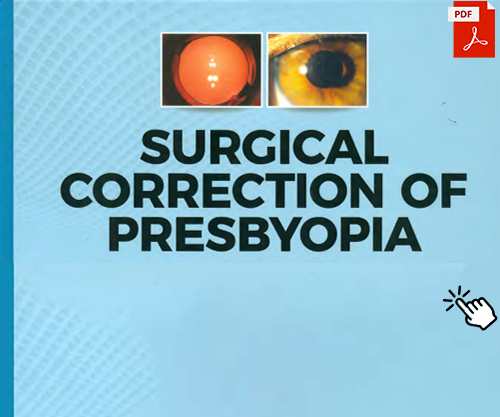
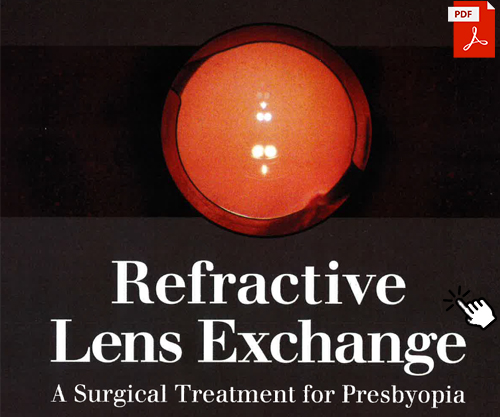
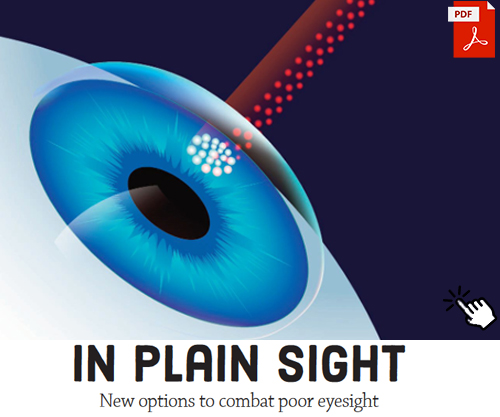
In a young eye (less than about 40 years old), your natural lens is fully transparent and also flexible. The lens muscles can easily change its curvature from steeper to flatter, and give you clear vision at all distances. But during middle age, usually beginning in the early 40s, the lens becomes less able to change its shape, so people experience blurred vision at near points, such as reading, sewing, or working at the computer and smart phones. This is known as presbyopia. You can understand this mechanism as an age-related loss of “zooming power” (“tele & wide,” like a camera) of your natural lens inside your eye (hence you zoom with your arms – short hands syndrome? ).
Given time, presbyopia happens to everyone. Also, you can have other associated conditions (like cataracts, nearsightedness, farsightedness or astigmatism) and presbyopia at the same time. In fact, you can even have 20/20 vision, but still need reading glasses because of presbyopia.
Having worked with over 20 different techniques and combinations using technological evolutions over time, Dr. Gulani can say with confidence that most presbyopia patients could be candidates for uniquely designed surgery to see without glasses or contact lenses. Since this malady will affect almost everyone as they age, why not raise this surgery event to an “experience?” Dr. Gulani believes such a vision suite is the future of eye surgery and will become the predominant ambience of eye surgery worldwide. It’s a design concept where patients are comfortable, relaxed and excited rather than apprehensive and in pain. With a no-injection, no-pain approach, they could address their frustrating vision issues and aim for vision freedom for each patient’s best potential and, in many cases, even beyond 20/20. Various options, including “no-cut,” “no-blade” laser precision techniques can be used for patients just with presbyopia and even those with associated nearsightedness, farsightedness and astigmatism.
In patients who do not have a cataract yet, you can get evaluated for advanced laser techniques to optically manipulate vision, so both eyes blend to see at all distances using spherical aberrations and wave fronts as a higher form of vision correction. Corneal inlays are also being investigated for use in this clientele. For patients who are used to mono-vision with their contact lenses (non-dominant eye is focused for near while dominant eye is focused for distance), they can have this arrangement replicated using highly precise lasers.
Refractive Lens Exchange (RLE): Early Cataracts

Further with age, when your natural lens in the eye becomes a cataract (cloudy), a “no-stitch” – “no-injection” and “no blade” cataract-like procedure with new generation multifocal/progressive lens, implants like ReStor, Symfony, Crystalens or Trifocal lens (very much like trifocal/bifocal/multifocal/progressive glasses) and even astigmatism-correcting lens implants (Toric) can permanently clear your cloudy vision (from an early cataract). And, in most cases, they will restore your ability to zoom (read) without glasses.
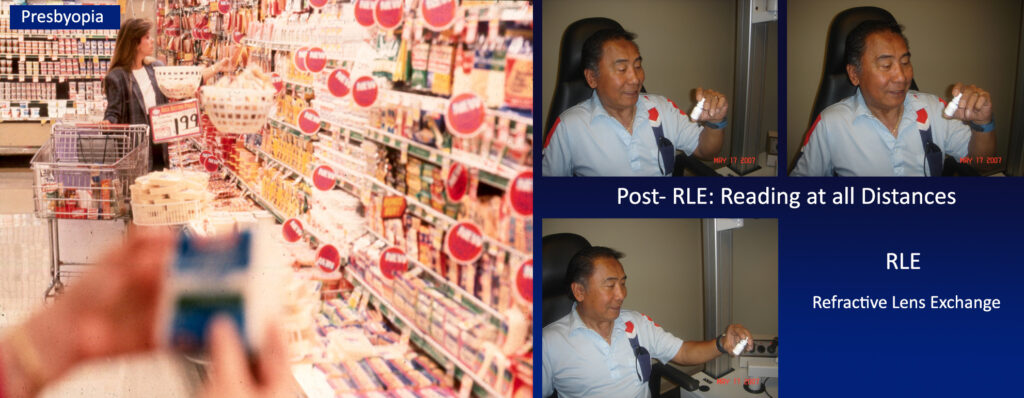
These lens implants are permanently placed inside your eye and replace the cloudy natural lens (early cataract) to aim for vision at all distances for the rest of your life. Thus, while addressing your early cataracts, not only presbyopia but also correction of your associated nearsightedness/farsightedness and even astigmatism be attempted with the same procedure. Additionally, combination of advanced laser vision surgery can be staged following early cataract surgery (RLE) to complete the vision goal for your individual eye. By this token, even patients who have had cataract surgery in the past can avail of advanced laser techniques to help correct their refractive errors (remaining glasses prescriptions) and presbyopia to lead a life free of glasses.
As our world comes closer to our circle of vision with smart phones, iPads, Facebook updates and Tweets, we can choose our options to gain vision freedom in this final frontier of vision corrective surgery. So “cheaters” beware; for presbyopia today, there is no “escape;” you have Dr. Gulani’s full focus and undivided attention!


